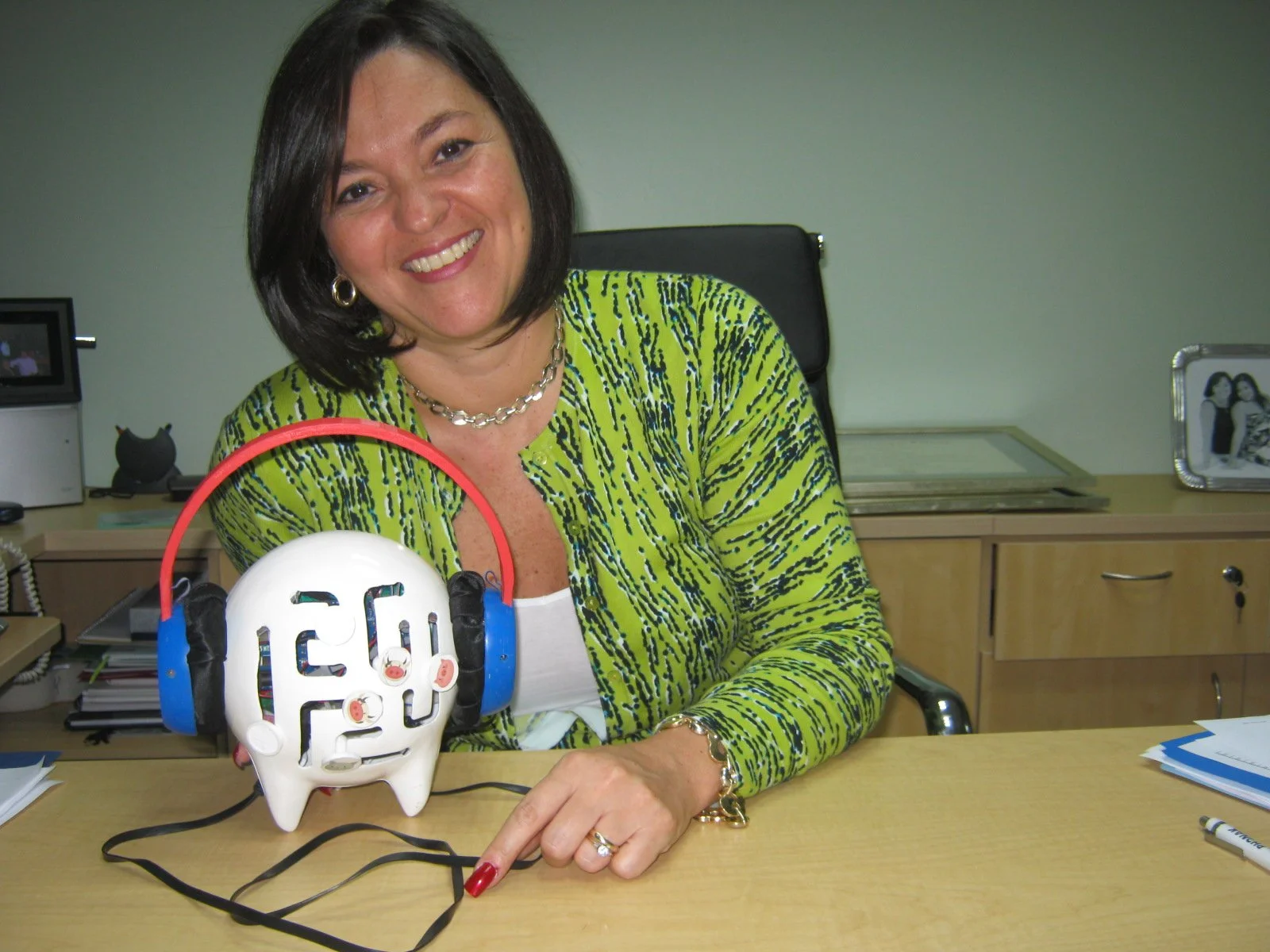
Sonis: Turning Hearing Screening Into Play
2013
Concept design for Cedaf Guatemala
This was the reality that haunted me when I first learned about the barriers preventing early hearing detection in Guatemala. Traditional audiometry requires a journey to specialized urban centers, sitting in intimidating soundproof booths while separated from technicians by glass windows—an experience that can be overwhelming even for adults, let alone young children who are already struggling to make sense of a world they can only partially hear.
The problem wasn't just medical; it was systemic. With over 50,000 educational establishments across Guatemala—36,716 public schools, 13,796 private institutions, and 253 municipal centers—there existed a vast infrastructure that could potentially reach every child, yet no tool designed to work within this system.
Imagine being a seven-year-old in rural Guatemala, sitting in the back of your classroom, watching your teacher's lips move but only catching fragments of words. You raise your hand less often, not because you don't know the answer, but because you're not entirely sure what the question was. Your classmates begin to see you as quiet, perhaps slower than the rest. But you're not slow—you're just one of the 17.9% of Guatemalan children with disabilities who live with undiagnosed hearing loss.
Understanding the Real Problem
Through ethnographic observation at CEDAF hearing center and interviews with 10 children aged 4-9, I witnessed how medical environments transformed curious children into anxious patients. One five-year-old called the audiometry equipment a "scary robot," revealing that the problem wasn't just medical—it was emotional.
Existing solutions prioritized clinical functionality over child engagement, making them unsuitable for school deployment. Children, however, spoke in the language of their daily lives—farm animals, familiar sounds that represented comfort rather than clinical examination.
Design Strategy
Working with audiometric technicians, I identified four critical screening frequencies (200Hz, 400Hz, 600Hz, 1000Hz) essential for speech development. The breakthrough came from embedding these frequencies into recognizable farm animal sounds that children across Guatemala's diverse communities could identify and enjoy.
Instead of raising hands to mysterious beeps, children would play a listening game, moving animal tokens when they heard their "calls." The clinical became playful, the intimidating became inviting.
"I believe that if this product were to be mass-produced, at least to make it affordable for teachers, therapists, etc., it would be perfect for evaluating children in the early grades of primary school. This is of great importance for the early detection of unilateral or bilateral hearing loss and thus initiating timely intervention."
Patricia Castellanos de Muñoz, AuD, FAAA. Doctor in Audiology, CEDAF





